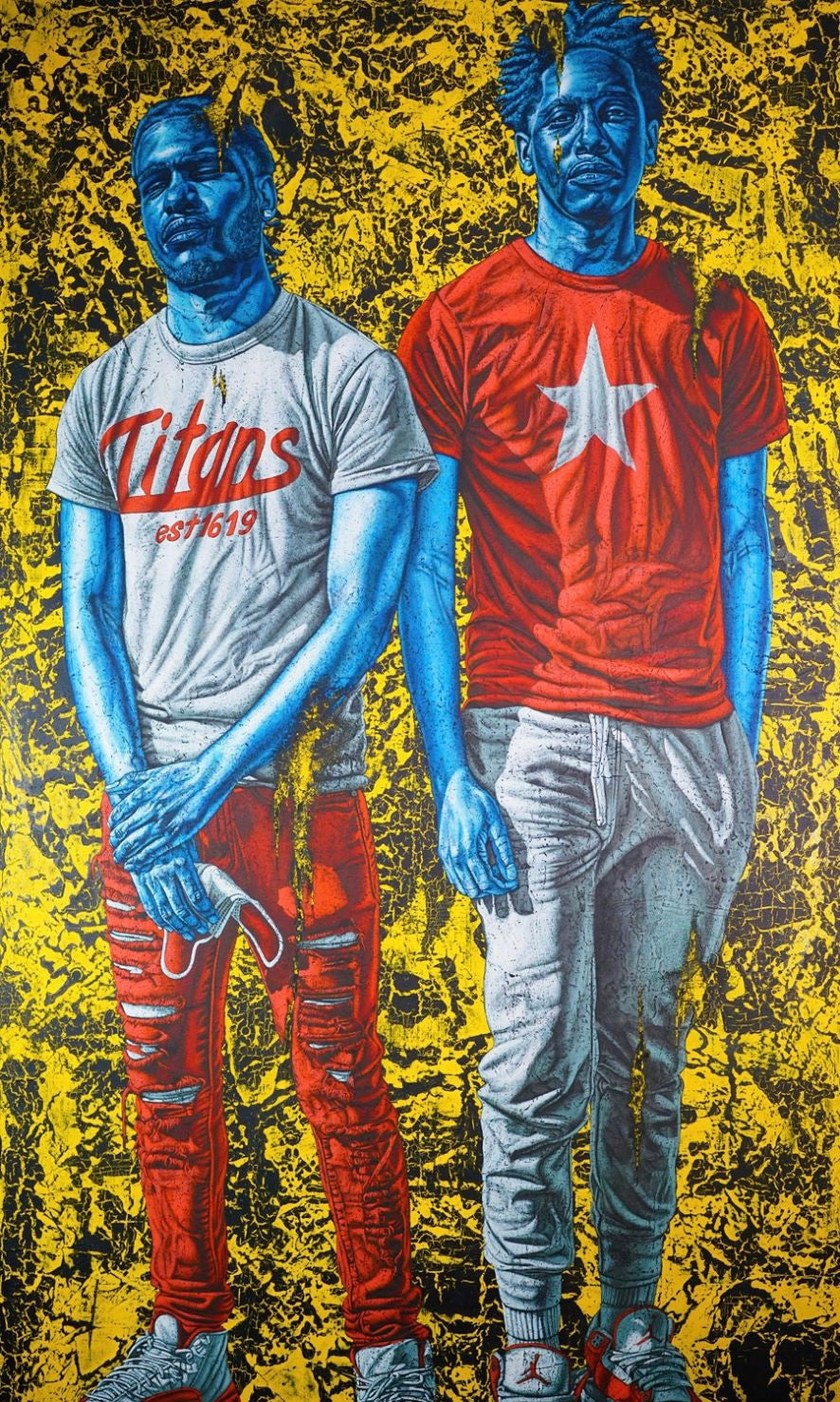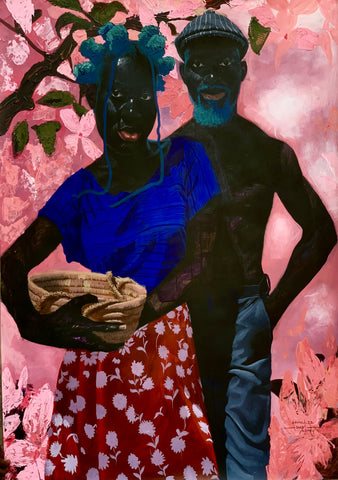Don’t Call It A Comeback: The Steadfast Influence of Black Southern Art
Don’t Call It A Comeback: The Steadfast Influence of Black Southern Art
by Yvonne Bynoe
In the words of rap artist LL Cool J, “Don't call it a comeback, I've been here for years.” Although New York City has been considered the art capital of the world for generations, the American South is the birthplace of internationally renowned art legends like Romare Bearden, Elizabeth Catlett and John T. Biggers.

In the 1980s, businesses such as Federal Express and CNN spurred a reverse migration as northern African Americans moved to the South to seek new employment opportunities and to connect with their roots. Nearly 40 years later, the 2020 COVID pandemic resulted in a resurgence in African Americans moving to southern states to escape the cold weather and outrageous housing costs. Nigerian immigrants have also been transforming the American South. There are approximately 150,000 people of Nigerian descent living in Houston, Texas. Houston was attractive to Nigerians because of its warm climate, the opportunities associated with the oil and gas industries, and the city's racial diversity. Former Houston Rockets player, Hakeem Olajuwon may also have had a small role in putting Houston on the radar for Nigerians. The changing demographics are also impacting art and culture in the South.

In May 2021, the staid museum world recognized the vibrance and uniqueness of southern Black culture with the exhibition, The Dirty South: Contemporary Art, Material Culture, and the Sonic Impulse at the Virginia Museum of Fine Arts. The term “Dirty South'' emerged in the 1990s to define the rap music emerging from cities such as Houston, Texas and Atlanta, Georgia that was distinct in cadence, language, and history from its East and West Coast counterparts. Unlike Northeast hip hop culture that glorifies surviving the concrete jungles, the hip hop of the Dirty South often focused on the land as a place of sustenance, pride and remembrance. The exhibition spanned the past one hundred years of visual and sonic art emanating from the American South and employed various media and disciplines to cover the vast terrain. In 2021-2022, The Dirty South travelled to several museums, including MCA Denver, Crystal Bridges Museum, and Contemporary Arts Museum-Houston.
Atlanta, Georgia, because of its colleges and universities, has historically been a magnet for African-American professionals and an important city for art. In 1942, TIME magazine named Atlanta University’s art department “the Southern U.S. Negro's Ecole des Beaux-Arts,” crediting Hale Aspacio Woodruff for his vision and leadership as the chairman of the art department. Nearly a century later, Atlanta University is again on the forefront of preparing a new generation of artists. The Atlanta University Center Art History and Curatorial Studies Collective was formed in 2018 to position the center as the leading incubator of African-American museum and art world professionals in the United States and abroad within the next decade.
Spelman College, a historically Black women’s college in Atlanta, is continuing the legacy of art in the southern mecca. Spelman, which counts artist Amy Sherald among its alumnae, developed the undergraduate program which will enroll students from Morehouse College and Clark Atlanta University who want to pursue degrees in art history and curatorial studies. This initiative will utilize the Spelman College Museum of Fine Arts, Clark Atlanta University Art Museum, and the strong liberal arts programs on all three campuses.
Najee Dorsey, a self-described “artpreneur,” represents the new generation of art influencers in the South. In 2005, the native of Blytheville, Arkansas moved to Atlanta, Georgia to pursue his art career. He has gained a national reputation for his nostalgic depictions of Black Southern culture and life, employing a variety of mediums such as collage, paints, and photography to create his stunning images. Over the years his work has been exhibited at the Pennsylvania Academy of Fine Arts, The Columbus Museum of Art and the Charles H. White Museum of African-American History, among others. In 2010, the full-time artist established the online platform Black Art in America (BAIA) to provide wider exposure and access to works by artists of African descent ranging from emerging artists to American masters. Dorsey says that since its founding, the mission of BAIA has been to “document, preserve and promote the contributions of the African-American arts community.” Dorsey is also a respected collector who has loaned work to various museum exhibitions. Most recently, in 2023, he lent works by Alfred Conteh and Tim Short to the BIG Stories exhibition at the Bo Bartlett Center in Columbus, GA, which then travelled to the New York Art Academy.

Also in 2023, BAIA opened its physical gallery location in Atlanta, Georgia as it continues to be an important resource for collectors and art professionals. In this significant role, BAIA is bringing attention to talented artists. Dorsey regularly shows the work of Atlanta-based artist Jamaal Barber, who was one of seven contestants in the 2023 MTV reality show, The Exhibition, vying for $100,000 in cash and a special exhibit at the Smithsonian’s Hirshhorn Museum and Sculpture Garden in Washington, D.C. One of Barber’s illustrations appears in the New York Time’s critically acclaimed 1619 Project. In 2023, Barber co-curated an exhibition of printmakers at the BAIA Gallery.
African-American gallerists historically have been on the forefront of discovering and nurturing artists of African descent, and Dorsey continues in that tradition. In 2023, BAIA participated in The SCOPE International Art Fair with work created by himself; Nigerian artist, Akinola Taoheed; and Traci Mims. Traci Mims is a native of St. Petersburg, Florida and currently resides in Atlanta. She received an MFA from the Tyler School of Art at Temple University and won the prestigious Atlanta Biennial McCain Award in 2023 for Printmaking. Mims came to the attention of BAIA through an open call for printmakers that was held by BAIA in preparation for its inaugural Atlanta Fine Art Print Fair.

Mims says that her work “focuses on themes related to Black identity and being a Black woman in today’s cultural and political climate.” She added, “I also like to focus on historical narratives and individuals. My ideas are often expressed in the form of cultural allegory and social realism.” Mims occasionally centers herself as a representative of both her community and the everyday woman in her work, using herself as a symbol to convey specific and relevant cultural narratives. In October 2023, Mims had her debut solo exhibition, Give Us The Sun at BAIA Gallery. In addition to being Mims’ first solo exhibition in Atlanta, it was also BAIA’s first solo exhibition in their new Atlanta gallery. The exhibition was centered on Mims graphite drawings and printmaking. However, to demonstrate her versatility, her paintings and quilt work were also featured. Mims credits Faith Ringgold’s narrative quilts as an important impetus for her to create quilts as part of her artistic practice. According to BAIA Gallery curator, Faron Manuel, “The through line of the show is truthfully her ability to accentuate the essence of the figure and ability to bring a narrative direction to portraiture.”
Individuals and organizations like Mims, Dorsey, BAIA, Atlanta’s HBCUs, and Valerie Cassel Oliver, who curated The Dirty South exhibit at the Virginia Museum of Fine Arts, are examples of Black entities that create, sell, and showcase artwork that speaks truth to power. During this period when reactionary political forces are attempting to rewrite American history to diminish the horrors of slavery as well as the myriad contributions of African Americans, this work is critical. The American South is where the Black experience in the United States began and continues to serve as spiritual and artistic inspiration for people of all ethnicities, especially. Black Americans. The influence of southern art isn’t confined to civil rights issues, as typically assumed; it also includes works that expand our understanding of ourselves as well as our relationships, families and communities—in the United States and abroad.
























